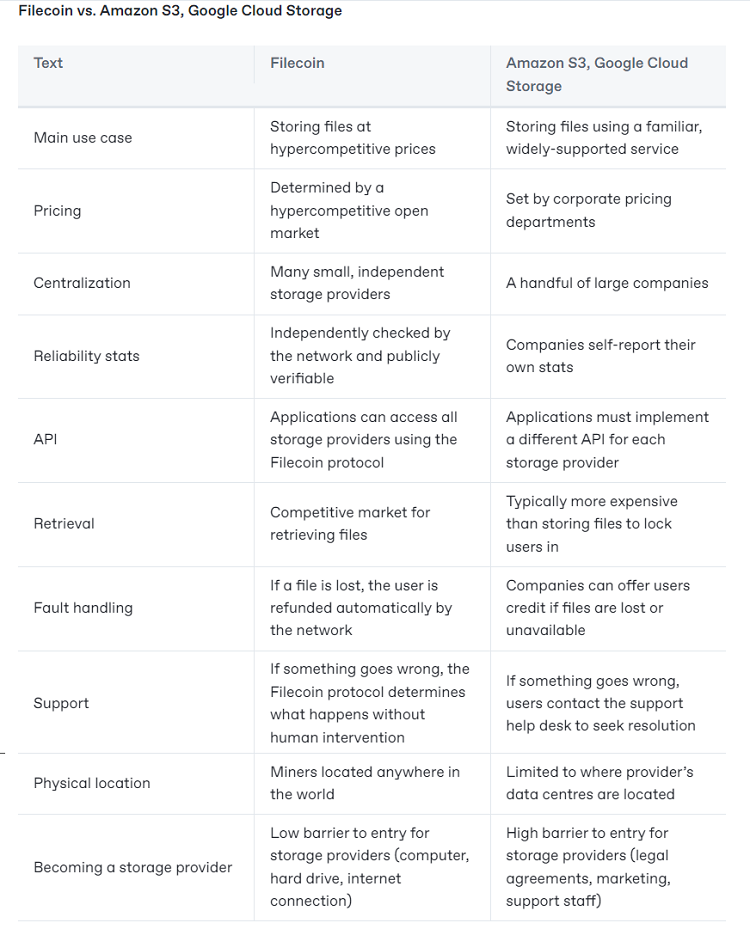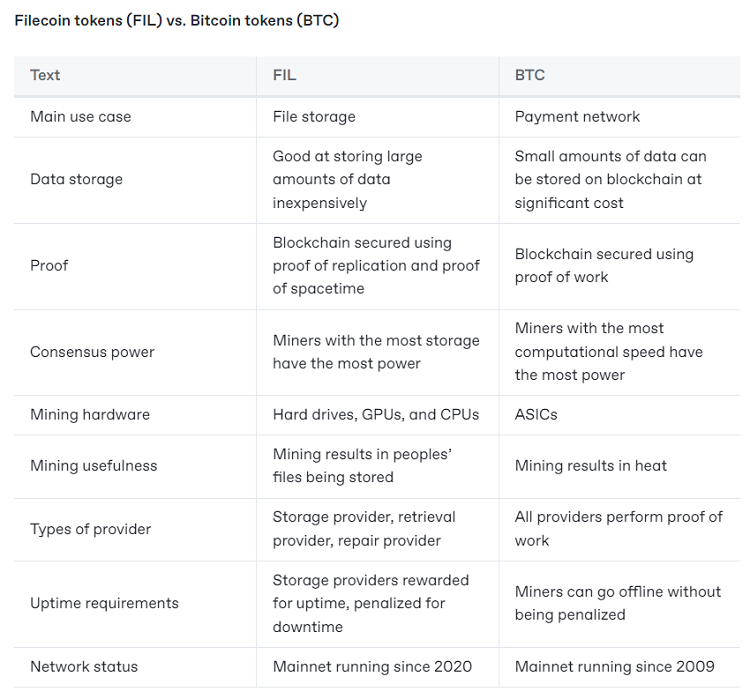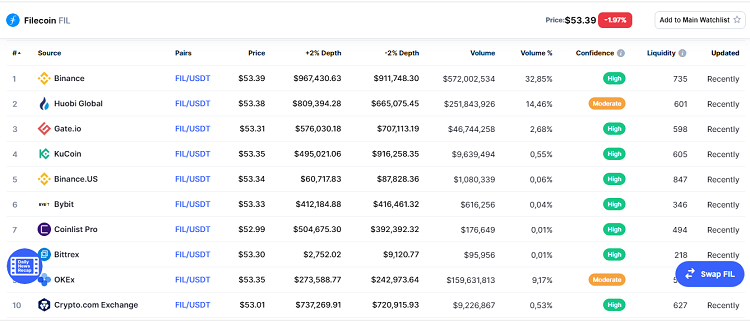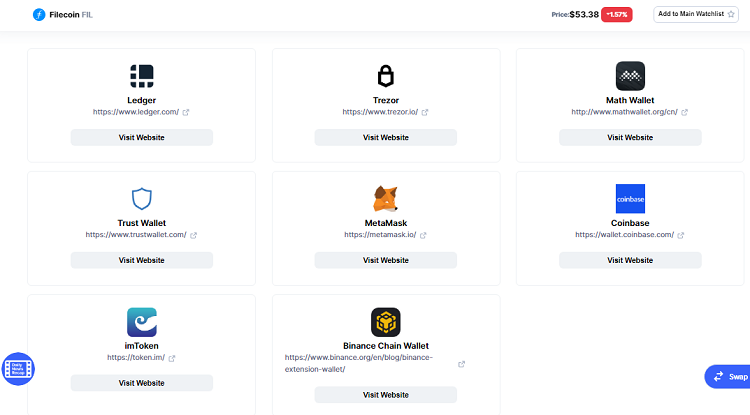Ranked among the top 50 cryptocurrencies with the highest market capitalization today, Filecoin is seen as a promising project attracting attention from many investors. So, what is Filecoin, what is FIL token, and whether you should invest in FIL coin or not, please see the detailed information below.
Contents
- 1 What is Filecoin? Is FIL coin a good investment 2025?
What is Filecoin? Is FIL coin a good investment 2025?

What is Filecoin?
With traditional storage methods, people may have to pay high fees for their data to be stored and retrieved on the systems of technology companies (such as Google Drive, Amazon Web Services). With this method, users will manage their own storage and retrieval of information, with higher security and much lower costs.
The following example is a comparison table between Filecoin and Amazon S3, Google Cloud Storage:

=> The ideal that Filecoin aims for is that it will help users store cloud data faster, cheaper, and more reliably when they want to retrieve data.
What is FIL token?
Basic information of FIL coin:
- Contract: 0x0d8ce2a99bb6e3b7db580ed848240e4a0f9ae153
- Blockchain: Filecoin
- Maximum Supply: 2 billion FIL
- Circulating Supply: 657,063,973
- Current FIL coin price: $ 2.45
The Filecoin network operates based on agreements made between customers and miners for ‘storage/retrieval contracts’.
In a storage transaction, when a customer chooses a specific Miner to store their information files, the choice will be based on the capacity, duration, and storage fee of that miner (the higher the fee, the better the security). The customer will be charged from a wallet containing corresponding FIL coins. Once the miner accepts the agreement, the storage contract is published.
Then, the customer prepares the data for storage and transfers it to the miner. The miner will package the data into an area, seal it, and proceed to send the proofs to the chain. The customer receives the first confirmation with assurance that the data has been stored correctly, and the transaction officially starts. Throughout the contract duration, the miner will continuously send proofs to the chain. If proofs are missing or delayed, the miner will be penalized. If the proofs are accurate, the miner will receive the FIL token reward upon contract completion.
In a retrieval transaction, the customer pays FIL for a contract with a miner tasked with retrieval to extract data from the Filecoin network (the data retrieval miner could be the storage miner or not). These transactions are conducted “off-chain” – the network will use micropayment channels to reward FIL coins to the miner for successful data retrieval.
Allocation of FIL tokens by Filecoin
- Filecoin Foundation: 5%
- Protocol Labs: 10.5%
- PL Team & Contributors: 4.5%
- Mining Reserve: 15%
- Fundraising – Remainder: 2.5%
- Fundraising – SAFT 2017: 7.5%
- Storage Mining Allocation: 55%

What are the computer requirements for mining Filecoin?
To mine Filecoin, there are no minimum requirements, but according to the guidelines on the official Filecoin website, your computer is recommended to have the following features:
-
CPU: The Filecoin team recommends AMD with more than 8 cores and capable of supporting Intel SHA extensions.
-
GPU: A strong GPU is recommended to significantly accelerate SNARK calculations. A list of supported GPUs is available on Github.
-
RAM: At least 128Gb recommended.
-
Disco: According to the official Filecoin website, a minimum of 1TiB of NVMe-based disk space is recommended for the buffer used to store data.
When you have a computer with these features, you will need to install the Filecoin network client application, called Lotus, and then be ready to start storing data from other users to earn your FIL tokens.
What algorithms is Filecoin currently using?
To develop its technology, Filecoin has used advanced algorithms such as:
- Expected Consensus: Expected consensus, a probabilistic Byzantine fault-tolerant consensus protocol
- Proof-of-Storage: Proof of storage, storage miners in the Filecoin network must prove that they hold copies of data at any given time.
- Stacked DRG PoRep: Stacked DRG Proof of Replication
- BlockSync: A simple request/response protocol that allows Filecoin nodes to request Tipsets from each other, when they are out of sync, such as during downtime.
- GossipSub: Block announcements and headers along with their message references are propagated using the libp2p GossipSub router. To ensure interoperability among different implementations, all Filecoin full nodes must implement and use this protocol.
- Cryptographic Primitives: Cryptographic primitives,
- Verified Clients: Verified clients
- Filecoin CryptoEconomics: The crypto-economics of Filecoin, the mechanisms and parameters of the system contribute to the overall network-level goals.
Should you invest in FIL coin?
Looking at the value of FIL coin, we can see that the price volatility of this coin is very large. At one point, the price of FIL coin had risen to nearly 200 USD in 2021, but by mid-2022, the price of FIL coin had plummeted dramatically, down to just over 5 USD, lower than the initial price at which FIL coin was launched in 2020.
Similar to Bitcoin, Filecoin also uses blockchain technology for decentralized cloud data storage. In this way, users do not have to trust a single entity to store their information. Instead of storing files on a central server, Filecoin splits and stores them on different computers around the world.
Filecoin can be mined by becoming a server provider for data storage/retrieval, so it may attract many participants similar to Bitcoin.
However, since traditional storage technology is already very familiar to users, can Filecoin displace top technology companies like Google or Amazon?
Moreover, the price of Filecoin is greatly influenced by Bitcoin and the cryptocurrency market. If this market no longer attracts investors, what will be the future of Filecoin?
Different between Filecoin and Bitcoin:

Where to buy FIL coin, which exchanges are reputable?

Among the Filecoin exchanges, Binance is the most chosen exchange. You can refer to the article: Instructions to register an account on Binance to start trading cryptocurrencies on this exchange.
Where to store FIL tokens, which wallets?
To store FIL tokens, you can choose the following wallets:

– Filecoin is a decentralized storage network, built with the purpose of becoming the most important data retrieval and information storage system of humanity, replacing traditional information storage methods.
– Filecoin, though only launched in the market from October 2020, quickly became a cryptocurrency with a market capitalization in the world’s top 50.
– FIL coin can be mined and has a maximum supply of 2 billion FIL coins
– Filecoin applies new technology to reduce transaction costs and increase processing speed compared to Bitcoin and Ethereum.
– The price of FIL coin is greatly influenced by Bitcoin’s price and faces a lot of competition as more and more cryptocurrencies with new technologies are launched.
– Should you invest in FIL coin? The answer bases on you as the cryptocurrency market always carries unforeseen risks. If you find this project feasible, you can invest but should only invest a small part of your capital.
- What is SPACE ID coin? Review Space ID – Should you invest?
- What is Loopring (LRC) coin? Is LRC a good investment?
Here, we hope you have understood what Filecoin is, as well as its strengths, weaknesses, and the technology that this project is implementing. If you have any questions or opinions about FIL coin, feel free to leave a comment for discussion.
















